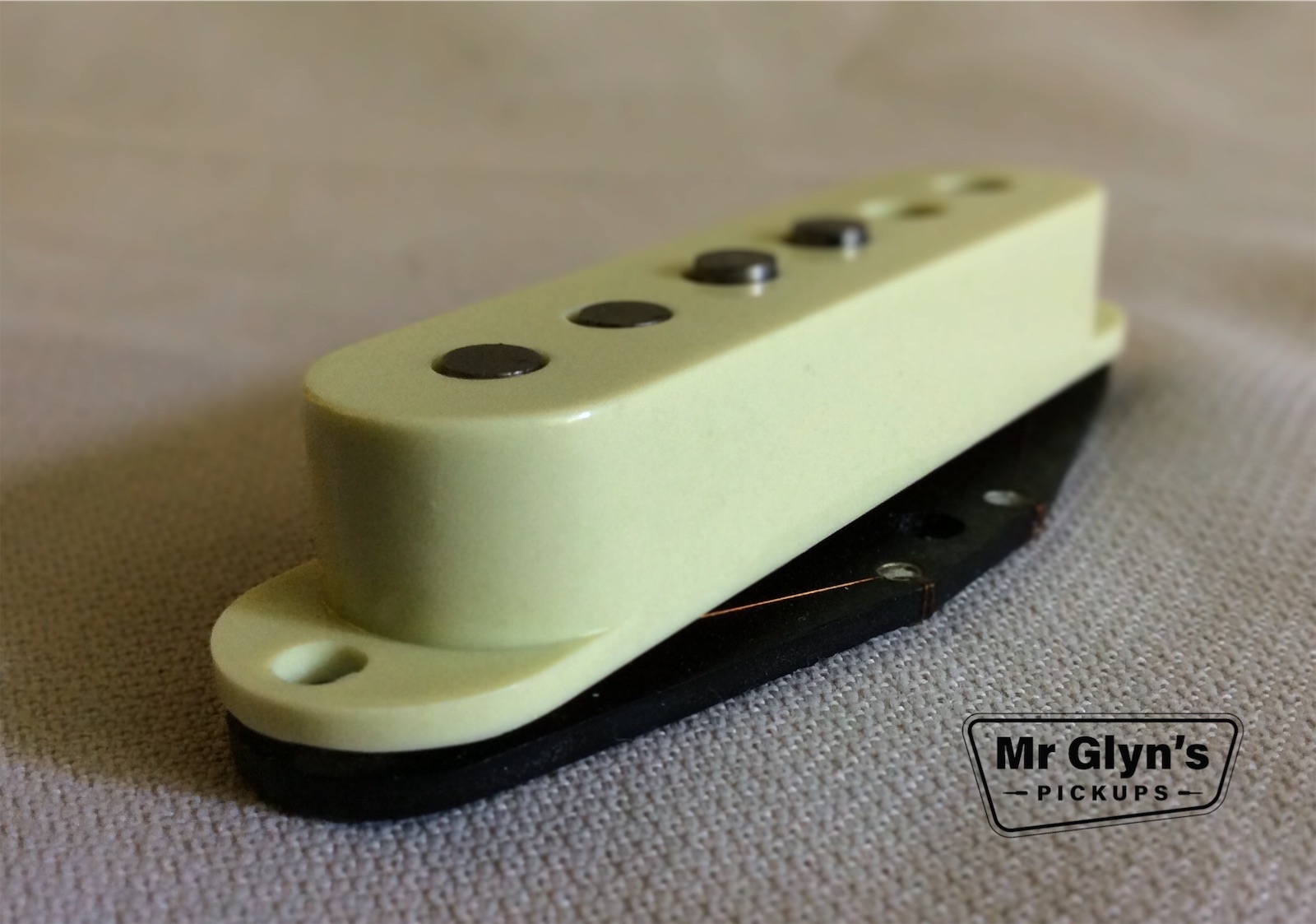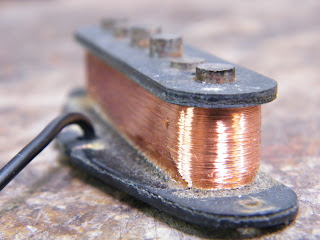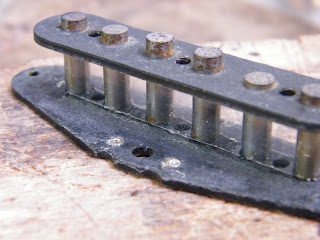Pickup string spacing is something you need to be aware of when you’re buying guitar pickups, particularly humbuckers. Guitar bridges come with different string widths so pickups need to match that. In this blog post I’m going to explain what It’s all about and how to measure it.
Table of Contents
What is a Pole Piece?
Pickups have pole pieces, think of these as magnets mounted in the pickup listening for string movement. Sometimes they are actual magnets, sometimes pieces of steel directing magnetism towards the strings. In this case they are steel screws.

This is what we mean by ‘pole spacing’ its the distance between the outer most poles, centre to centre.
What you don’t need to know
The way a pickup works is the string sitting inside the magnetic field actually becomes a temporary magnet and when it vibrates it disturbs this magnetic field and creates an electrical signal in the coil of wire around the magnet.
It’s a tiny signal but enough to get through your guitar’s on board circuit and down a cable to an amplifier. It’s hard to imagine that such a small amount of electricity can produce such a lot of sound. Have a think about it next time you’re at a big gig. What you’re hearing is just that small amount of electricity generated in a coil of wire. It’s really cool stuff and I find it fascinating. But you don’t really need to know all that.
Pickup String spacing – what you need to know
What you do need to know is that the string needs to align with the magnet to get the best signal. Magnets are, however, not lasers, they generate a magnetic field and not a precise beam. If the string isn’t in perfect alignment it’s fine. If the slightest misalignment made a difference then string bending would cause a drop in volume. Have a look next time you bend a string how far the string moves away from the pole.

As you can see, a little bit out of line makes no difference. Eddie Van Halen used a vintage PAF on Van Halen I with a Fender type bridge – the PAF ‘s were 49.2mm (1 15/16″) spacing and Fender bridges are usually 52mm. If there had been a problem he would have noticed.
Please remember that if a humbucker has 49.2mm spacing or 52mm spacing it’s outer dimensions are the same. The overall size of the pickup doesn’t change. So if you take out a 49.2mm humbucker and replace it with a 52mm it will still fit, it’s just the pole alignment to the strings that will be different.
Guitar bridges come in various sizes giving different string spacing. So if you have a Gibson ABR Tune-o-matic your string spacing will be narrower than a Fender Strat bridge, for instance.
By the time the strings get to the neck pickup the spacings are just about the same so neck pickups don’t vary in width. We’re just talking about bridge pickups here.
So we really want the strings to line up as best as possible with the pickup’s poles but we’re not getting too hung up on it.
How to measure string spacing
The measurement is the distance from the first to the sixth strings centre to centre at the bridge pickup. This diagram should help:

You can simply do this with a ruler, like I have.
As you can see this ’89 Strat bridge has 52mm string spacing. If you wanted to choose a bridge humbucker to make it a HSS Strat than choose the 52mm option.
If you’re buying a Mr Glyns Pickup and have any doubt just send me a pic of your bridge and I should be able to advise you.
What is F spacing?
F spacing simply means a wider spaced bridge humbucker – 52, 52.5 or 53mm. The F stands for either ‘Fender’ or ‘Floyd Rose’. It isn’t clear which and doesn’t really matter.
Why 49.2mm not just 49mm? You may well ask! It’s the metric equivalent of the pole spacing for a Gibson PAF which is the pickup most humbuckers are based on. The original measurement in imperial is 1 15/16″ – which if you ask me is no less silly a number that 49.2 but we’re stuck with it.
If this has given you a need for a new set of humbuckers you can find the Mr Glyns Pickup humbucker range here.
Here is a link to my YouTube playlist for humbucker demos.

















